如何从Go源代码生成OpenAPI v3规范?
亲爱的编程学习爱好者,如果你点开了这篇文章,说明你对《如何从Go源代码生成OpenAPI v3规范?》很感兴趣。本篇文章就来给大家详细解析一下,主要介绍一下,希望所有认真读完的童鞋们,都有实质性的提高。
有没有办法从go源代码生成openapi v3规范?假设我可以尝试一下 像下面这样的 api,我想从中生成 openapi 规范(yaml 文件)。类似于python的flask restx。我知道有一些工具可以根据规范生成 go 源代码,但是,我想以相反的方式进行操作。
package main
import "net/http"
func main() {
http.HandleFunc("/hello", func(w http.ResponseWriter, r *http.Request) {
w.Write([]byte("world\n"))
})
http.ListenAndServe(":5050", nil)
}
解决方案
您可以使用 github.com/swaggest/rest 构建自记录 http rest api。该库建立了一个约定,以可用于反映文档和模式并维护有关它的单一事实来源的方式声明处理程序。
我个人认为,与规范优先方法相比,代码优先方法具有优势。它不需要成为规范语言语法方面的专家,因此可以降低入门门槛。它可能有助于提出一个与实现细节很好平衡的规范。
使用代码优先方法,无需实现完整的服务来获取规范。您只需要定义结构和接口,可以推迟实际的逻辑实现。
请查看简单使用example。
package main
import (
"context"
"errors"
"fmt"
"log"
"net/http"
"time"
"github.com/go-chi/chi"
"github.com/go-chi/chi/middleware"
"github.com/swaggest/rest"
"github.com/swaggest/rest/chirouter"
"github.com/swaggest/rest/jsonschema"
"github.com/swaggest/rest/nethttp"
"github.com/swaggest/rest/openapi"
"github.com/swaggest/rest/request"
"github.com/swaggest/rest/response"
"github.com/swaggest/rest/response/gzip"
"github.com/swaggest/swgui/v3cdn"
"github.com/swaggest/usecase"
"github.com/swaggest/usecase/status"
)
func main() {
// init api documentation schema.
apischema := &openapi.collector{}
apischema.reflector().specens().info.title = "basic example"
apischema.reflector().specens().info.withdescription("this app showcases a trivial rest api.")
apischema.reflector().specens().info.version = "v1.2.3"
// setup request decoder and validator.
validatorfactory := jsonschema.newfactory(apischema, apischema)
decoderfactory := request.newdecoderfactory()
decoderfactory.applydefaults = true
decoderfactory.setdecoderfunc(rest.paraminpath, chirouter.pathtourlvalues)
// create router.
r := chirouter.newwrapper(chi.newrouter())
// setup middlewares.
r.use(
middleware.recoverer, // panic recovery.
nethttp.openapimiddleware(apischema), // documentation collector.
request.decodermiddleware(decoderfactory), // request decoder setup.
request.validatormiddleware(validatorfactory), // request validator setup.
response.encodermiddleware, // response encoder setup.
gzip.middleware, // response compression with support for direct gzip pass through.
)
// create use case interactor.
u := usecase.iointeractor{}
// describe use case interactor.
u.settitle("greeter")
u.setdescription("greeter greets you.")
// declare input port type.
type helloinput struct {
locale string `query:"locale" default:"en-us" pattern:"^[a-z]{2}-[a-z]{2}$" enum:"ru-ru,en-us"`
name string `path:"name" minlength:"3"` // field tags define parameter location and json schema constraints.
}
u.input = new(helloinput)
// declare output port type.
type hellooutput struct {
now time.time `header:"x-now" json:"-"`
message string `json:"message"`
}
u.output = new(hellooutput)
u.setexpectederrors(status.invalidargument)
messages := map[string]string{
"en-us": "hello, %s!",
"ru-ru": "Привет, %s!",
}
u.interactor = usecase.interact(func(ctx context.context, input, output interface{}) error {
var (
in = input.(*helloinput)
out = output.(*hellooutput)
)
msg, available := messages[in.locale]
if !available {
return status.wrap(errors.new("unknown locale"), status.invalidargument)
}
out.message = fmt.sprintf(msg, in.name)
out.now = time.now()
return nil
})
// add use case handler to router.
r.method(http.methodget, "/hello/{name}", nethttp.newhandler(u))
// swagger ui endpoint at /docs.
r.method(http.methodget, "/docs/openapi.json", apischema)
r.mount("/docs", v3cdn.newhandler(apischema.reflector().spec.info.title,
"/docs/openapi.json", "/docs"))
// start server.
log.println("http://localhost:8011/docs")
if err := http.listenandserve(":8011", r); err != nil {
log.fatal(err)
}
}您可以使用 Huma(完全公开:我是作者)从 go 代码生成 openapi 3.1 和 json schema,它适用于各种流行的路由器,因此可以根据需要集成到现有代码库中。 huma 利用 go 泛型为输入参数、主体、响应头等提供编译时检查。
这是一个简单的 hello world 示例,只有几行:
package main
import (
"context"
"fmt"
"net/http"
"github.com/danielgtaylor/huma/v2"
"github.com/danielgtaylor/huma/v2/adapters/humachi"
"github.com/go-chi/chi/v5"
)
// greetinginput represents the greeting operation request.
type greetinginput struct {
name string `path:"name" maxlength:"30" example:"world" doc:"name to greet"`
}
// greetingoutput represents the greeting operation response.
type greetingoutput struct {
body struct {
message string `json:"message" example:"hello, world!" doc:"greeting message"`
}
}
func main() {
// create a new router & api
router := chi.newmux()
api := humachi.new(router, huma.defaultconfig("my api", "1.0.0"))
// register get /greeting/{name}
huma.register(api, huma.operation{
operationid: "get-greeting",
summary: "get a greeting",
method: http.methodget,
path: "/greeting/{name}",
}, func(ctx context.context, input *greetinginput) (*greetingoutput, error) {
resp := &greetingoutput{}
resp.body.message = fmt.sprintf("hello, %s!", input.name)
return resp, nil
})
// start the server!
http.listenandserve("127.0.0.1:8888", router)
}
然后您可以轻松地从服务获取生成的 openapi:
curl http://localhost:8888/openapi.json
您还可以在 http://localhost:8888/docs 查看 openapi 生成的文档。
今天关于《如何从Go源代码生成OpenAPI v3规范?》的内容介绍就到此结束,如果有什么疑问或者建议,可以在golang学习网公众号下多多回复交流;文中若有不正之处,也希望回复留言以告知!
 golang 函数与方法的区别是?
golang 函数与方法的区别是?
- 上一篇
- golang 函数与方法的区别是?
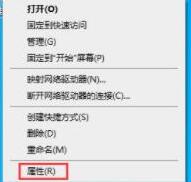
- 下一篇
- WIN10设置虚拟内存的操作内容
-

- Golang · Go问答 | 1年前 |
- 在读取缓冲通道中的内容之前退出
- 139浏览 收藏
-
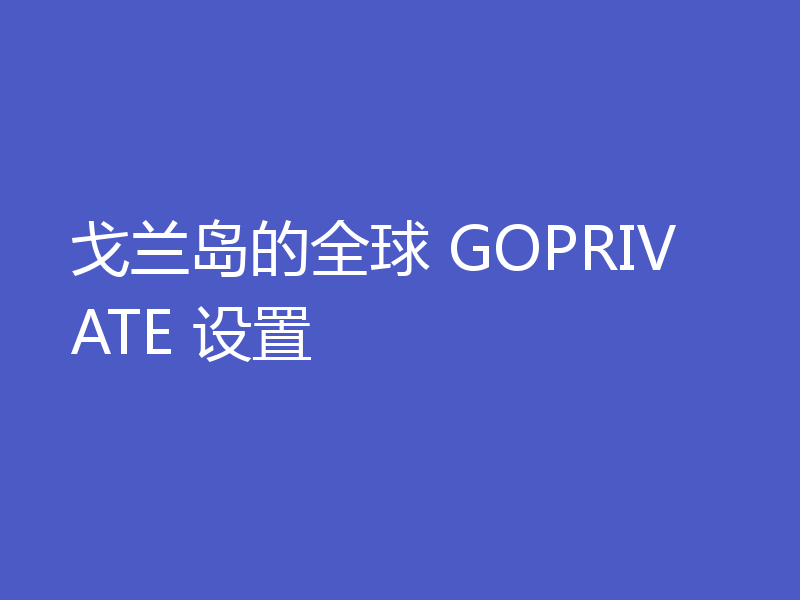
- Golang · Go问答 | 1年前 |
- 戈兰岛的全球 GOPRIVATE 设置
- 204浏览 收藏
-

- Golang · Go问答 | 1年前 |
- 如何将结构作为参数传递给 xml-rpc
- 325浏览 收藏
-

- Golang · Go问答 | 1年前 |
- 如何用golang获得小数点以下两位长度?
- 478浏览 收藏
-
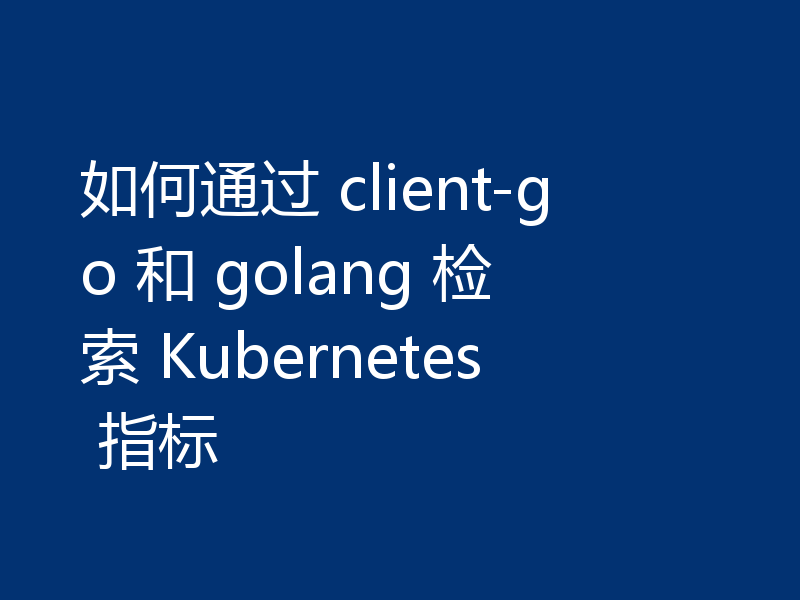
- Golang · Go问答 | 1年前 |
- 如何通过 client-go 和 golang 检索 Kubernetes 指标
- 486浏览 收藏
-

- Golang · Go问答 | 1年前 |
- 将多个“参数”映射到单个可变参数的习惯用法
- 439浏览 收藏
-
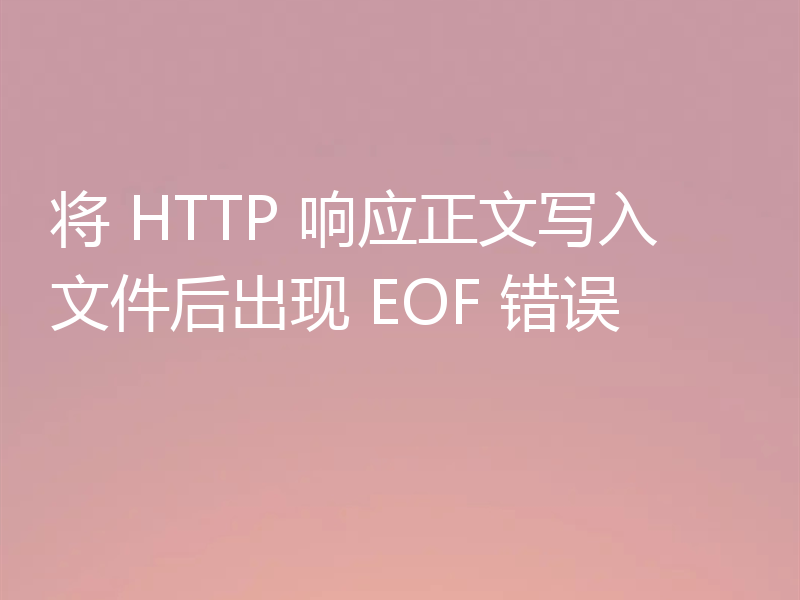
- Golang · Go问答 | 1年前 |
- 将 HTTP 响应正文写入文件后出现 EOF 错误
- 357浏览 收藏
-

- Golang · Go问答 | 1年前 |
- 结构中映射的匿名列表的“复合文字中缺少类型”
- 352浏览 收藏
-
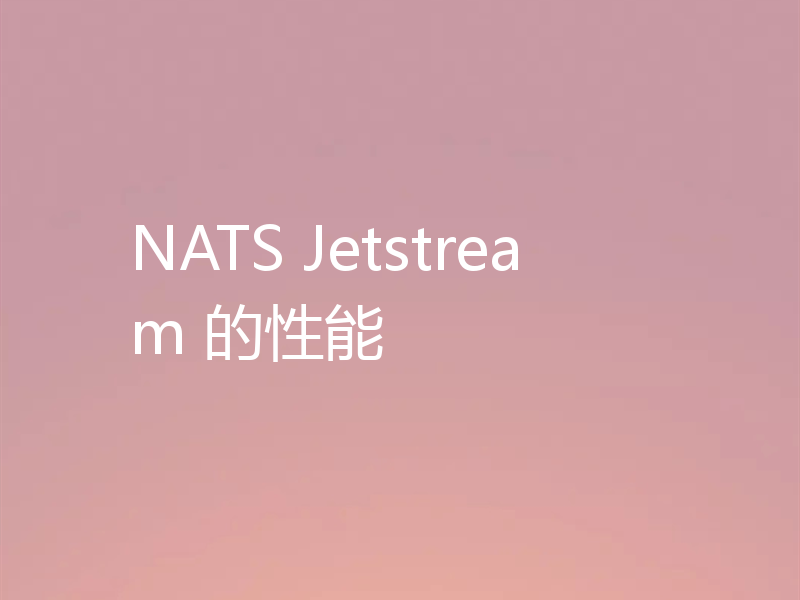
- Golang · Go问答 | 1年前 |
- NATS Jetstream 的性能
- 101浏览 收藏
-

- Golang · Go问答 | 1年前 |
- 如何将复杂的字符串输入转换为mapstring?
- 440浏览 收藏
-
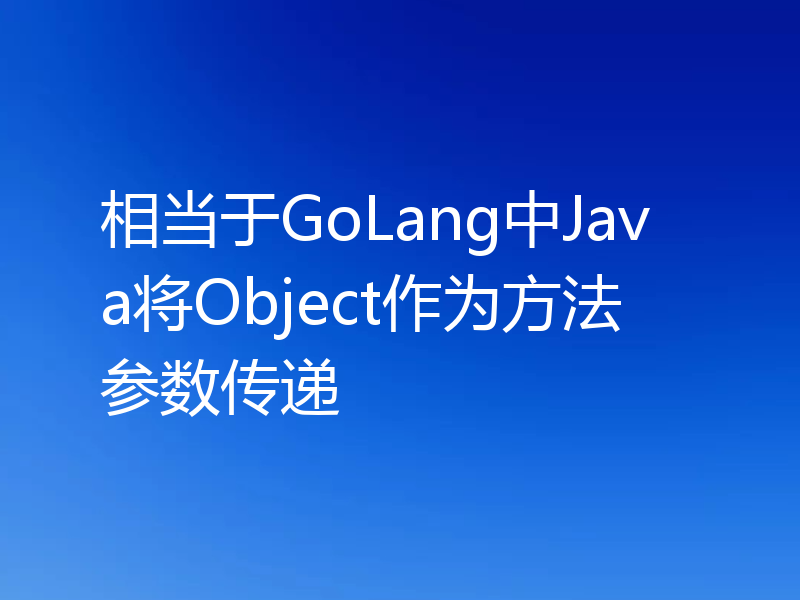
- Golang · Go问答 | 1年前 |
- 相当于GoLang中Java将Object作为方法参数传递
- 212浏览 收藏
-

- Golang · Go问答 | 1年前 |
- 如何确保所有 goroutine 在没有 time.Sleep 的情况下终止?
- 143浏览 收藏
-

- 前端进阶之JavaScript设计模式
- 设计模式是开发人员在软件开发过程中面临一般问题时的解决方案,代表了最佳的实践。本课程的主打内容包括JS常见设计模式以及具体应用场景,打造一站式知识长龙服务,适合有JS基础的同学学习。
- 543次学习
-

- GO语言核心编程课程
- 本课程采用真实案例,全面具体可落地,从理论到实践,一步一步将GO核心编程技术、编程思想、底层实现融会贯通,使学习者贴近时代脉搏,做IT互联网时代的弄潮儿。
- 516次学习
-

- 简单聊聊mysql8与网络通信
- 如有问题加微信:Le-studyg;在课程中,我们将首先介绍MySQL8的新特性,包括性能优化、安全增强、新数据类型等,帮助学生快速熟悉MySQL8的最新功能。接着,我们将深入解析MySQL的网络通信机制,包括协议、连接管理、数据传输等,让
- 500次学习
-

- JavaScript正则表达式基础与实战
- 在任何一门编程语言中,正则表达式,都是一项重要的知识,它提供了高效的字符串匹配与捕获机制,可以极大的简化程序设计。
- 487次学习
-

- 从零制作响应式网站—Grid布局
- 本系列教程将展示从零制作一个假想的网络科技公司官网,分为导航,轮播,关于我们,成功案例,服务流程,团队介绍,数据部分,公司动态,底部信息等内容区块。网站整体采用CSSGrid布局,支持响应式,有流畅过渡和展现动画。
- 485次学习
-
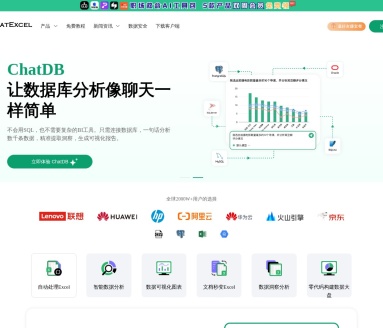
- ChatExcel酷表
- ChatExcel酷表是由北京大学团队打造的Excel聊天机器人,用自然语言操控表格,简化数据处理,告别繁琐操作,提升工作效率!适用于学生、上班族及政府人员。
- 3193次使用
-
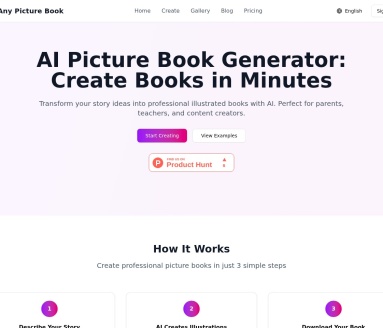
- Any绘本
- 探索Any绘本(anypicturebook.com/zh),一款开源免费的AI绘本创作工具,基于Google Gemini与Flux AI模型,让您轻松创作个性化绘本。适用于家庭、教育、创作等多种场景,零门槛,高自由度,技术透明,本地可控。
- 3405次使用
-

- 可赞AI
- 可赞AI,AI驱动的办公可视化智能工具,助您轻松实现文本与可视化元素高效转化。无论是智能文档生成、多格式文本解析,还是一键生成专业图表、脑图、知识卡片,可赞AI都能让信息处理更清晰高效。覆盖数据汇报、会议纪要、内容营销等全场景,大幅提升办公效率,降低专业门槛,是您提升工作效率的得力助手。
- 3436次使用
-

- 星月写作
- 星月写作是国内首款聚焦中文网络小说创作的AI辅助工具,解决网文作者从构思到变现的全流程痛点。AI扫榜、专属模板、全链路适配,助力新人快速上手,资深作者效率倍增。
- 4543次使用
-

- MagicLight
- MagicLight.ai是全球首款叙事驱动型AI动画视频创作平台,专注于解决从故事想法到完整动画的全流程痛点。它通过自研AI模型,保障角色、风格、场景高度一致性,让零动画经验者也能高效产出专业级叙事内容。广泛适用于独立创作者、动画工作室、教育机构及企业营销,助您轻松实现创意落地与商业化。
- 3814次使用
-
- GoLand调式动态执行代码
- 2023-01-13 502浏览
-
- 用Nginx反向代理部署go写的网站。
- 2023-01-17 502浏览
-
- Golang取得代码运行时间的问题
- 2023-02-24 501浏览
-
- 请问 go 代码如何实现在代码改动后不需要Ctrl+c,然后重新 go run *.go 文件?
- 2023-01-08 501浏览
-
- 如何从同一个 io.Reader 读取多次
- 2023-04-11 501浏览



